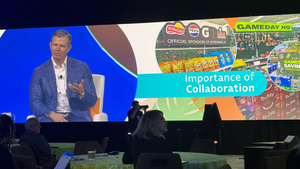Nonfoods Talk: Peanut Butter Jelly Time?Nonfoods Talk: Peanut Butter Jelly Time?
Creating product demand takes a lot of creativity, backed by a well-developed process.
January 1, 2018
Welch’s did a fantastic job in pushing out the information that it now offers two versions of Graham Slam, a smartly named frozen snack featuring the popular combination of Welch’s jelly and peanut butter, within two graham crackers—at least to me. Frankly, it sounds delicious.
Over the course of a couple of weeks in March, I saw a commercial for the new product more than a dozen times, each one suggesting that I look in my favorite grocer’s frozen snack section to purchase the item, which is available in two flavors: grape and strawberry.
I did and the product was nowhere to be found. In fact, I went to six different supermarkets (five different banners) and could not find the product anywhere.
For a peanut butter and jelly connoisseur like me, who is always on the lookout for that something better, it was a huge disappointment.
Now, I am certain that Welch’s will eventually get the product into distribution channels and onto more supermarket store shelves. In fact, I bet it will happen soon. But all that money the company spent on notifying the public about Graham Slam may have gone for naught if my experience is the norm—or even close to the norm.
Though I am not privy to Welch’s marketing strategy, it seems the company may be relying on an approach that focuses on consumer demand to force retailers to stock a product. In other words, build a strong advertising program; get consumers to yearn for the item and start asking for their favorite store to carry it. Retailers, they assume, will quickly react, call their Welch’s rep, and get the item in store.
Great idea, but it does not always work and it is a pretty expensive gamble, especially given the fact that the typical consumer’s memory span is about 40 seconds, and if they do not see an item in a store once or twice they will stop looking.
The other approach, of course, is to get retailers on board with the product before launching any type of advertising blitz, and soon after introducing the item to the trade. That way, consumers who want the item will find it in their favorite supermarket immediately.
Regardless of the method, suppliers—whether they are selling food products or nonfoods products—need to learn that creating a successful product takes a lot of creativity, backed by a well-developed process to both build consumer awareness and to convince space-limited retailers to give the item a shot. Otherwise, it is simple throwing good money into the wind.
The downside of internet shopping.
My son recently purchased three golf shirts, online, from a major sporting goods retailer for his summer career as a golf caddy. Days later they showed up, but one of the three shirts still had the security lock attached. I called the nearest store location and asked if I could bring the shirt in and get the security lock removed. The woman that answered said, “sure.”
To be safe, I brought the receipt and put the shirt in a bag. I walked directly to the first cashier, explained the situation and gave her the shirt. She took it away and came back with the manager who immediately questioned me on whether I stole the item and was trying to pull a fast one on them, even after seeing the receipt.
After about 15 minutes the manager found the woman I spoke with on the phone to confirm my story.
About the Author
You May Also Like




